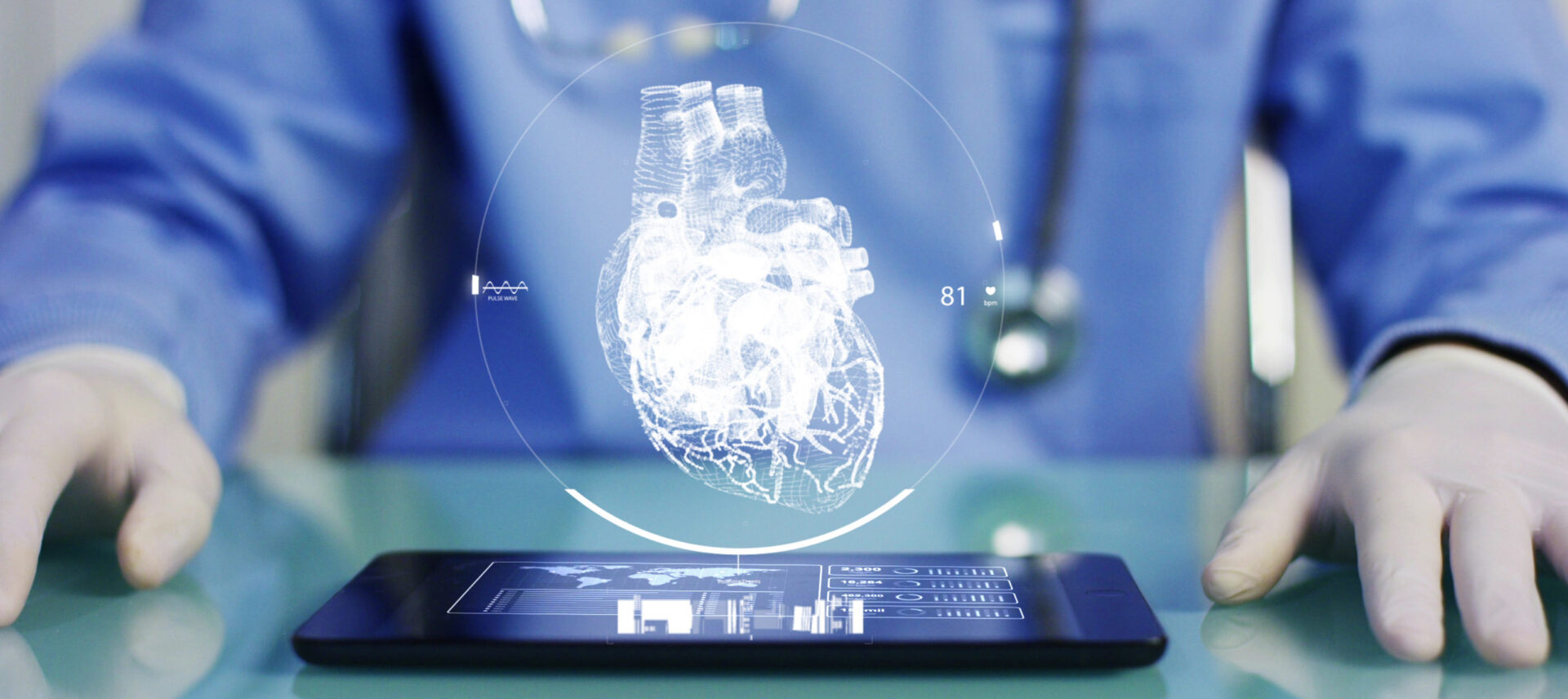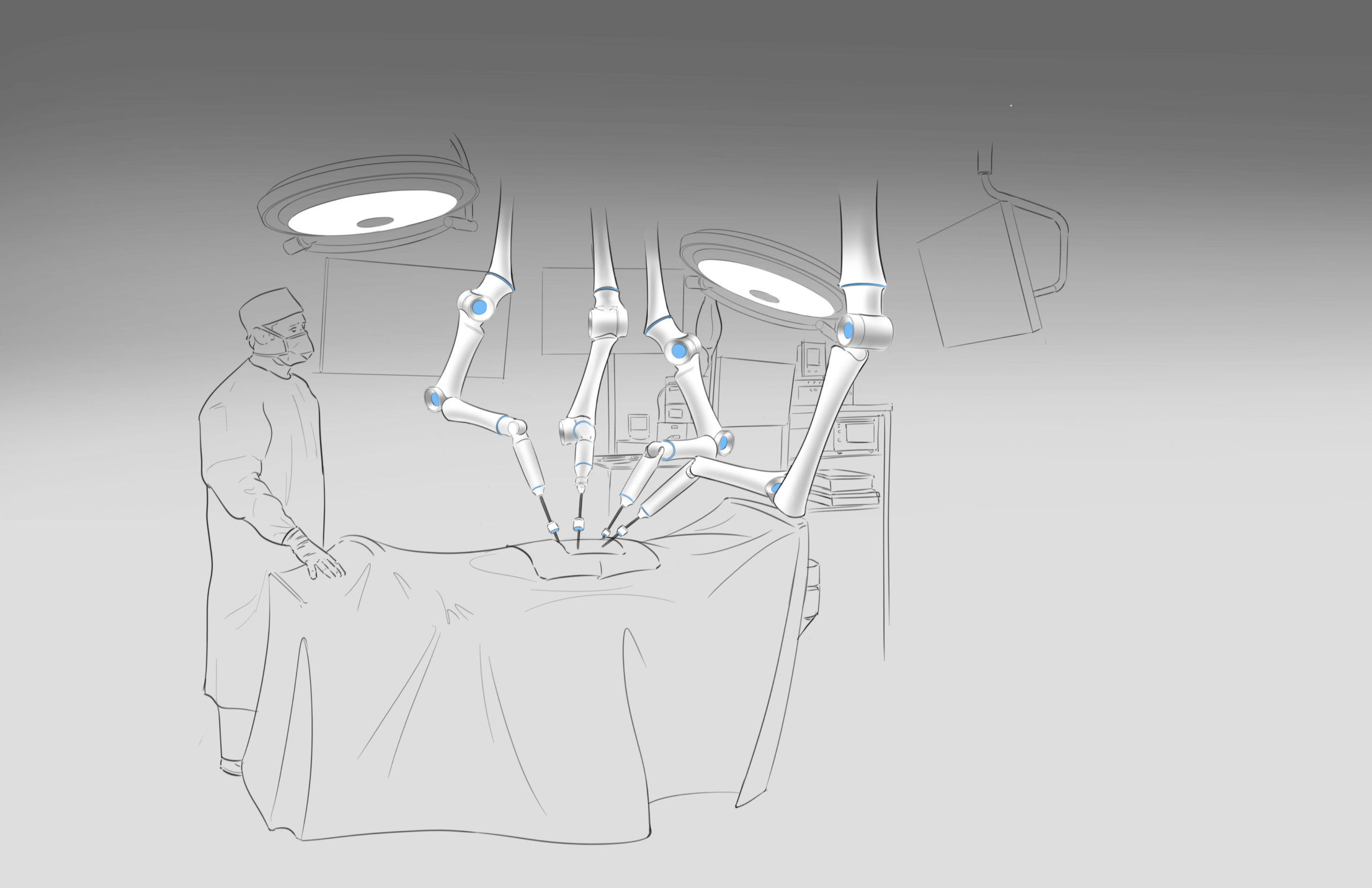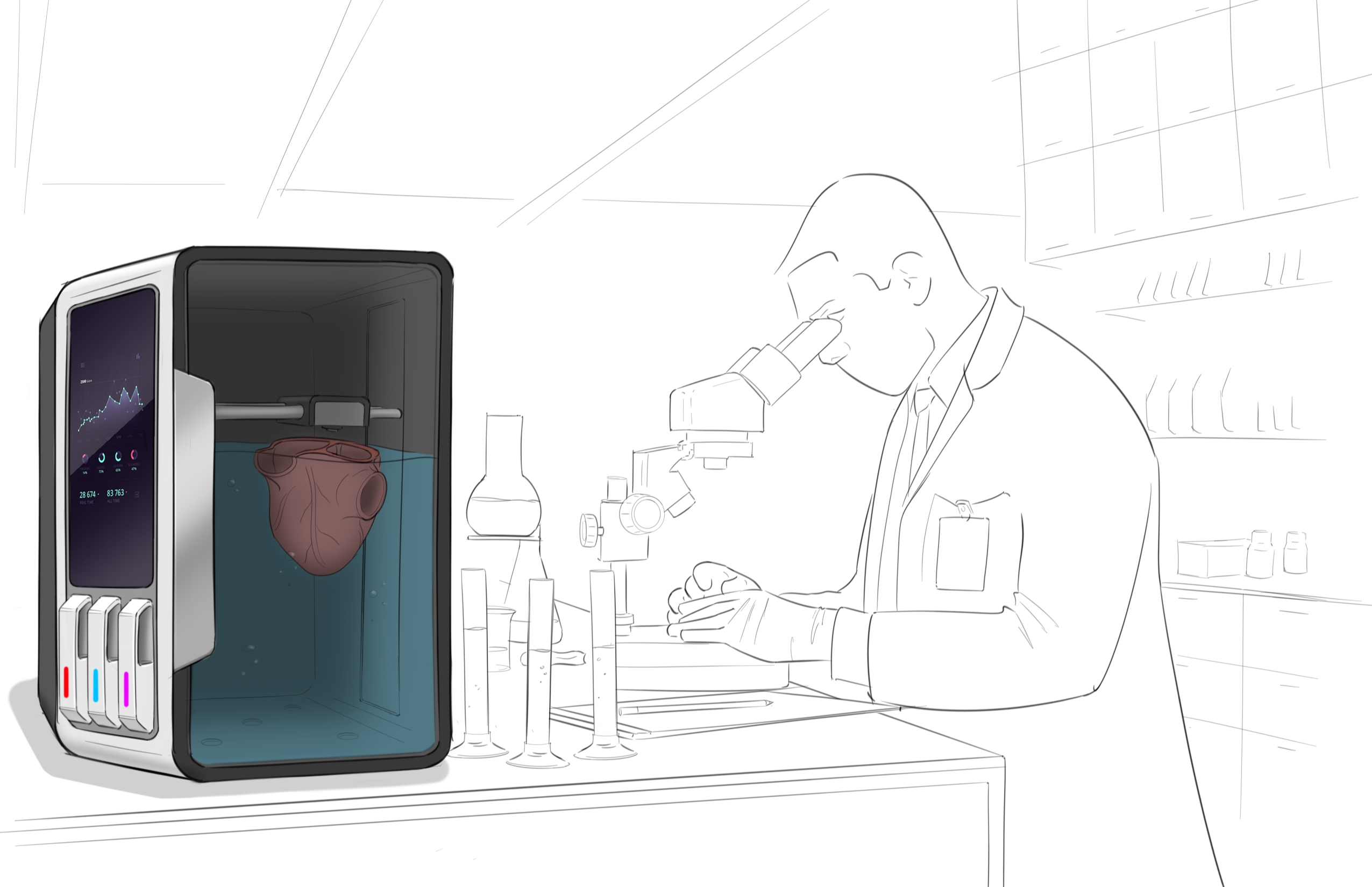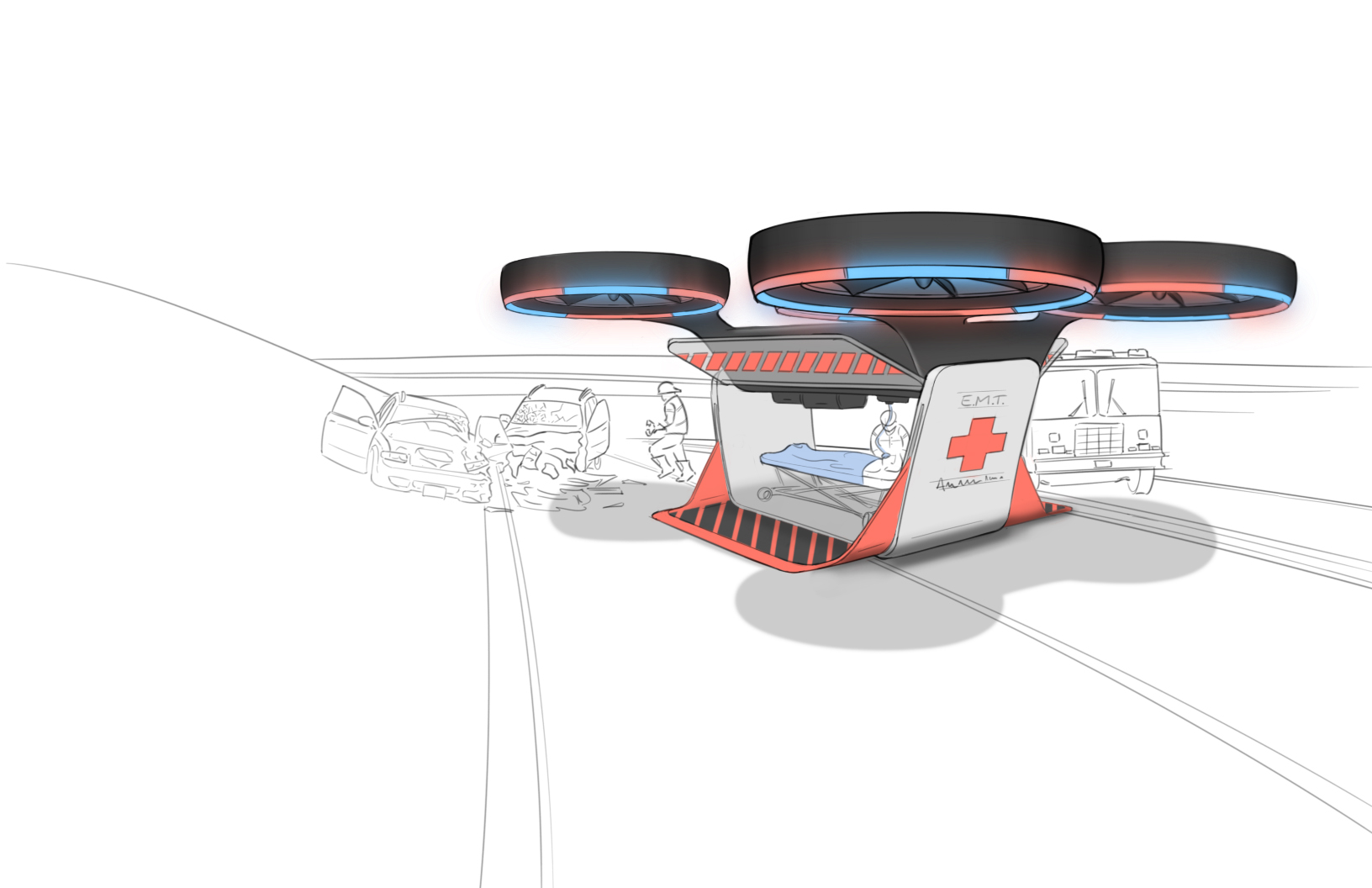
Article
Tricorders & Telemedicine: 9 Emerging Trends for Healthcare in 2040
Medical technology and healthcare design are evolving — quickly. Learn the game changers for the future and their major implications for your industry.
Technology is changing rapidly – it’s not easy to keep up. Nowhere is that more painful or more painfully evident than in healthcare. It can take years, even decades, to get a new product to market. By the time a medical device launches it’s often, in comparison to other industries, already outdated and aged.
As the rate of technological evolution continues to speed up, it’s important for companies to look ahead and proactively plan for the future. For the healthcare industry in particular, this need is even more pressing as it is compounded by the pace of declining health in our society, the commoditization of many conventional devices, and a boom in medical technology patenting.
And while no one can glimpse directly into the future and make perfectly accurate predictions, a deep understanding of product development trends and a broad knowledge of multiple industries can inform the discovery of probable and viable scenarios. With that, the following predictions are part science-fiction and part emerging trends. They are rooted in today’s reality but built to explore the vast, and ever-changing, potential of the future – because imagining the future is the first step in building it.
Prediction #1: Tele-doctors make house calls
By the mid-2020s, developments in high definition image sensing and ultra low-latency 5G mobile networks will transform our notions of remote work and telecommunications. Data transfer rates are poised to be reliable and fast enough to support critical communications, providing new opportunities for real-time, precision services. This will broaden applications for telemedicine and the point-of-care will increasingly shift from the hospital to the home.
By 2040 the popularity of telemedicine will have created a burgeoning market for remote medical devices of therapeutic quality. As patients become primary users, device design will be heavily influenced by trends in consumer products – overwhelmingly favoring usability and intuitiveness. It is probable that these devices will also have integrated AI and AR systems that assist patients with their setup and handling.
Mild: Telemedicine is common but is used mostly by PCPs for routine consultations (flu, annual check-up, strep throat) and basic diagnostics. It’s especially prevalent in remote communities and used frequently by busy parents. It grows faster in developing countries where gains in internet access will outpace access to transportation.
Wild: Telemedicine appointments are the norm and in-person visits are limited to major procedures. Doctors will be able to remotely sync with devices and control them with enough accuracy to safely perform minor medical procedures in the home.
Prediction #2: Appendectomy on auto-pilot
Pilots have gone from aviation heroes, garnering national attention, to auto-pilot jockeys teetering on the edge of irrelevance (sorry pilots). Not to say that flying a plane is easy, but the job has changed dramatically over the decades. Surgeons and anesthesiologists may see a similar unraveling of their own fields as robotic surgery and computer-controlled anesthesia break further into the market.
Over the next decade or so, data from every surgery performed on these systems will be cataloged, analyzed, and fed into machine learning algorithms. Companies will spend an incredible amount of time distilling this data into actionable output, allowing them to create error-prevention protocols and automatic, unaided surgical procedures.
Computer vision systems will grow more sophisticated, while, concurrently, continuous vitals monitoring will be amplified by advances in biosensing. These mountains of data will be endlessly fed into computer-controlled systems, rendering them far more capable of assessing a situation and adapting quicker than their human counterparts. Ultimately, surgical outcomes will improve as complications are caught more frequently and resolved earlier.
Mild: As cost drops and the incidence of lawsuits rises, computer-controlled systems become more prevalent in hospitals. Specialists regularly remote into robotic systems and perform operations over long distances, but most are conducted by someone on-site. Corporations fight to gain market share by adding unique tool tips and incorporating haptic feedback into the controls.
Wild: Advances in machine learning and computer control surpass surgeons’ and anesthesiologists’ abilities. Computer-controlled systems perform most operations independently, while one or two MD/program managers monitor ongoing cases from a centralized command center. Ruggedized and miniaturized robotic systems are made deployable – allowing basic surgery and treatment outside of the OR.

Prediction #3: Trusting AI with your life
Artificial intelligence is a booming field. Its applications seem almost limitless. Just within the realm of healthcare, AI could revolutionize the industry in multiple ways.
Medically trained AI algorithms, like Watson, could aid doctors in triage, diagnosis, and the selection of appropriate therapies. Neural networks enable them to sort information and look for patterns on a scale that far exceeds the capacity of most humans. They can keep current on every research paper and study published in real time, instantly providing access to new techniques and treatment options.
Procedure-specific AIs may be trained as assistants, watchfully overseeing operations and preemptively warning of hazards. They may be placed onboard in many medical devices, providing increased functionality and new opportunities at the device level. Companies that once relied on overburdening IFUs and labels to reduce their FMEA-based risk, will turn instead to embedded AIs. These new enforcement programs will ensure instructions are acknowledged and understood before a procedure begins.
Consumer-facing AIs will be developed to help patients navigate the increasingly complex healthcare system. Insurance companies may offer services that help patients better understand the full scope of treatment options and the differences in cost between multiple providers. A little guidance could help patients choose the therapy with the best cost-benefit ratio and avoid bankruptcy. Medical device and pharmaceutical companies will likely provide AI chatbots that can answer consumers’ questions before a procedure or guide them through at-home instructions. Just think – your very own AI could help you prepare for your next colonoscopy. How fun!
Mild: AI is slowly adopted in a few instruments… but is heavily regulated by the FDA. Most of the advancement takes place in non-medical, patient-facing devices and apps. WebMD’s self-diagnosis tool gets an AI upgrade and waiting times in clinics rise accordingly.
Wild: It’s all over. Skynet got us.
Just kidding. AI is everywhere. It’s in stethoscopes, blood pressure cuffs, robotic systems, phones, surgical drills – everything. It’s a trusted ally, filtering out human mistakes and taking on routine tasks in every sector. It frees doctors and engineers to spend more time researching, thinking, and developing new modes of treatment. Advances in medicine accelerate, hampered only by the lead-shoes of government oversight.
Prediction #4: Deep wearables and cyborg humans
Sales of wearables have been prolific over the past few years. It’s a near certainty that they won’t be disappearing anytime soon. Instead, refinement in the application of data collection and usage, along with miniaturization of technology, will enable wearables to proliferate. By 2040, we imagine wearables will be much more ingrained in our culture — and eagerly adopted by the healthcare industry.
As the information collected becomes more trusted and complete, medicine will become more holistic and more precise. Many wearables may cross the threshold between “wearable” and implant, allowing continuous monitoring and real-time data tracking. The first hybrid wearable implants (deep wearables) will most likely be implantable blood monitors – helping those suffering from common diseases like diabetes and high cholesterol.
However, it won’t be long before advocates of augmentation will seek to improve upon the limited capabilities of mankind. Augmentation of sight or hearing will become elective surgeries, obscuring the purpose of medicine and blurring the lines between man and machine.
Mild: What wearables can track and measure continues to increase. Devices get smaller and take on more capability as the rapid march of technology continues. Designer wearables become more popular as high-fashion embraces them. One or two deep wearables are released – by prescription only.
Wild: Blood monitoring literally becomes as easy as getting your dog microchipped. A sensor on your holo-phone allows you to easily read data from your subdermal chip and sync it with your EHR. A few start-ups experiment with human upgrades, but they are cost-prohibitive. Concerns about inequity and access grow.
Prediction #5: Engineered organs and edited genes
Need a new kidney? Today, your options aren’t great. You can wait for one or… you can wait for one. Mechanical systems just can’t compete with biology, and many chronic diseases remain incurable. But novel therapeutic prospects are breaching the horizon. Advances in biomaterials, regenerative medicine, and molecular biology are being leveraged to create artificially engineered organs and tissues.
On the other hand, developments in gene therapy and genetic engineering may prevent the need for replacing that kidney in the first place. By editing out congenital diseases directly in the DNA, genetic engineering promises to stamp out certain diseases from birth. Other gene therapies regenerate worn or damaged cells – effectively stopping cancer in its tracks and reversing the effects of aging.
As research continues, these technologies are likely to bolster the development of hybrid mechanical-biological implants and a new class of medical devices. Grown and printed grafts of organic tissues will be incrementally integrated into traditionally mechanical medical devices. Development of these hybrids will increase rapidly, ultimately, serving as an avenue to clinical trials and broad market acceptance of the more radical bio-based therapies that are sure to come. Innovative start-ups, keen on disruption and eager to solve clinician pain points, will infuse new creativity into device design, creating the first biological medical devices and tools. Imagine growing a personalized, biological intubation tube that precisely seals the trachea or a biological IV needle that grows at the needle site for increased comfort. Though it sounds like a far-off, fictionalized future, rogue scientists have already spliced DNA to create chimeras and edited genes in human embryos. And that’s after only a handful of years with advanced technologies like CRISPR, so just imagine where we’ll be after two decades.
Mild: Scientists reproduce complex organs and extend their functional life. Many are surgically implanted into animal hosts for study. Major medical companies fund research into biological implants and gene therapies, but few, if any, have hit the market. The scientific community keeps a watchful eye on the development of gene editing and works with global governments to put regulations in place. Access to CRISPR is restricted and black markets for gene editing begin to emerge.
Wild: Engineered organs and tissues are printed or grown directly into your body, completely revolutionizing modern surgical procedure. Despite excitement, many gene therapies are still in clinical trials, but we’ve successfully cured every mouse-born disease known to man. Germline gene editing is allowed in a few countries but restricted in most. Unsurprisingly, medical tourism increases as people seek out regenerative and gene therapies far from home. Medical device manufacturers that were slow to adapt find themselves suffering from reduced sales as the volume of conventional surgeries declines.

Prediction #6: A wave of biological health-tracking devices
Curious about your cholesterol? Wondering if you’re allergic to some exotic variety of tomatoes? Your Fitbit can’t help you – yet. But over the next few years, disruptive start-up companies will find ways to simplify laboratory diagnostics and bring biological testing directly to the consumer.
Tricoder-esque health trackers will be sold under the guise of providing more informed health, but the business model will be all about data collection. Use will be dependent upon downloading an app, linking to the cloud, and mindlessly signing away your privacy in the T&Cs. This coveted access to your personal data will enable savvy companies to offer targeted products claiming to address your ailments.
As these companies establish new revenue streams, they’ll likely look to be bought out by big tech or big pharma. Either way, corporations will eventually get their hands on health data, possibly spurring public backlash or kick-starting new government regulation.
Mild: The principles of lab testing remain largely the same. Engineers cherry-pick the most interesting diagnostics and convert them to handheld form. These “non-diagnostic” health trackers are sold by subscription, allowing users to rotate through the type of health data they’d like to collect. The devices link to an app on your phone and the anonymized data is mined and sold. Though some may technically be medical devices, the data they collect will come with limited claims as to their level of diagnostic quality. This will preemptively release them from any liability and curtail the need for clinical trials.
Wild: Breakthroughs in diagnostic testing allow engineers to pack several tests into a single, portable device. These FDA-cleared medical trackers are sold by prescription, and data from the devices links to your mobile EHR app, theoretically keeping it private.
Prediction #7: Prescription diets and nutrition rise to prominence
America is unhealthy. Obesity rates have skyrocketed, heart disease and hypertension are up, and developing cancer seems to be inevitable. For the first time in modern history, the new generation’s average life-expectancy is expected to fall in comparison to the previous generation.
Though many factors are contributing to this decline, much can be tied to our poor nutrition and lackluster eating habits. That’s why, by 2040, we predict that your PCP will prescribe a tailor-made, medicine-infused daily diet. Food and medication will become synonymous as our understanding of nutrition and pharmacology evolve. Insurance companies may be incentivized to supplement the costs of this new “foodicine” in an effort to boost preventative medicine and improve profitability.
Unfortunately, diets are hard to stick to and pills are easy to forget. So this personalized dietary medication trend won’t take-off until it can be supported by the next big culinary revolution – Food Printers. Printed meals will slowly and inconspicuously transition your tastes into compliance with your dietary plan, all the while satisfying the growing need for convenience. Medications will be mixed and infused directly into the meal, eliminating the need to ever choke down a pill again.
Mild: The middle and upper-middle classes have access to food printers, but it’s purely a thing of convenience. They’re mostly marketed towards super-busy DINKs, soccer moms, and health-focused retirees. Cartridges for trendy diets, nutritional supplements, and homeopathic allergy “cures” are readily available. Prescription cartridges may be available through select pharmacies, but options are limited. Unsurprisingly, food trends remain largely the same for the extreme ends of the socioeconomic ladder. Both luxury and affordability remain prime purchase drivers for the upper and lower classes, respectively.
Wild: Food printers are the new microwaves. They’re installed in every kitchen and are always online. Your entire diet is prescribed and nutritional cartridges are shipped directly to your door. Vitamin and nutritional supplement companies are early adopters and work directly with insurance companies to develop reimbursable product lines.
Prediction #8: Medi-drones take to the skies
No list of tech-centric predictions is complete without mention of flying cars. They are, after all, the quintessential icon of the future. And now, for the first time, they seem to be materializing in a (marginally) practical way. Advancements in multicopter design, autonomous navigation systems, and LIDAR detection have created a platform ripe for the advancement of the transportation industry. With certainty, the impact of these advancements will slowly but inevitably drift into the healthcare landscape.
By 2040, we predict that ambulances are an early adopter of these trends. Flight already gives emergency helicopters a significant life-saving advantage over ground transportation. In the future, multicopter ambulance drones will provide better access to unreachable locations, faster response times, and a more stable ride.
And despite strict regulations around the delivery of medical supplies, autonomous drones are well-positioned for reforming the logistics of healthcare. Even today, a few companies are starting to adopt smaller drones for provisioning medical supplies in remote areas. It’s not a far stretch to imagine fleets of drones delivering healthcare supplies to disaster areas and quarantine zones. As their usage becomes more economical, it is likely that we’ll see all manner of drones routinely utilized for commonplace occurrences. Why load up a truck when you can fly prescription medications directly to consumers or controlled substances to hospitals?
Mild: Medi-vac helicopters are slowly phased out as human-piloted ambulance quad-copters become more common. Ground-based ambulances are still prevalent, but growing traffic in major cities often renders them slow and unreliable.
Wild: Fleets of fully autonomous, airborne ambulances shuttle the wounded and sick throughout the city. Non-emergency, boutique medical facilities are built within larger, ground-based drones. They’re designed for comfort and convenience and are marketed to elites as the modern-day house-call. Amazon’s specialization in fulfillment services coupled with their large army of nimble drones has facilitated their winning delivery/disposal contracts with all of the major pharmacies and hospitals.

Prediction #9: Designing for the world
Sustainability. It’s a buzzword. It’s a philosophy. And it’s nearly impossible to quickly and easily apply in product design today. Regardless, demand for more eco-conscious products is growing in hospitals and clinics. Nurses, scrub techs, purchasing, and waste management are all keenly aware of the wasteful and costly nature of disposable, single-use devices. However, medical device companies will be slow to adopt greener approaches as the focus on safety and sterility will (and should) remain the highest priority.
And yet, as the world elects to take a more responsible and forward-thinking approach to product development as a whole, medical device companies will inevitably be forced to contend with the ramifications of greener government regulations and hospital preferences. At some point, medical device suppliers that fail to adapt will be penalized for disposable design, receiving hall passes only for procedures or techniques that require a disposable and have no alternatives.
Additionally, trends in medicine will evolve as China’s influence in the world continues to grow. Eastern medicine will progressively drive changes in Western methodologies (acupuncture, anyone?) and techniques as more Chinese-owned companies enter foreign markets. Companies seeking to expand from saturated markets in developed countries to sales-friendly emerging markets will have to adapt to local customs, and device designs will splinter accordingly.
Mild: Hospitals stop buying so many disposables, but not many can afford to make “feel-good” decisions. Mergers between American and Chinese medical device companies increase in frequency. Emerging markets become less of an afterthought, as teams are set aside to develop products that address their unique needs. The rise of globalization creates a corresponding rise in international ethnographic research as companies seek to adapt their technologies to foreign cultures.
Wild: A majority of hospitals crack down on waste and force sustainable design. Reusable devices make a resurgence but are built to be modular for easy cleaning. Companies invest heavily in creating sterilizable biomaterials to expand their offerings. A handful of inventive Chinese companies become major players in the market, while American companies work hard to learn what will sell in Asian markets.
Adapting to change and planning for the future
If nothing else, the next two decades promise to be full of change and provocative, new frontiers. The slew of emerging technologies and the rapid pace of their evolution makes this both an exciting and challenging time to be in new product development. The most important thing to remember is that the future is only what we make of it. We can build the spectacularly practical version that comes with very little transformation. Or, we can build the massively wild one – the future that pushes the boundaries of product design. The future you build will depend only on your appetite for risk and the limits of your creativity.





